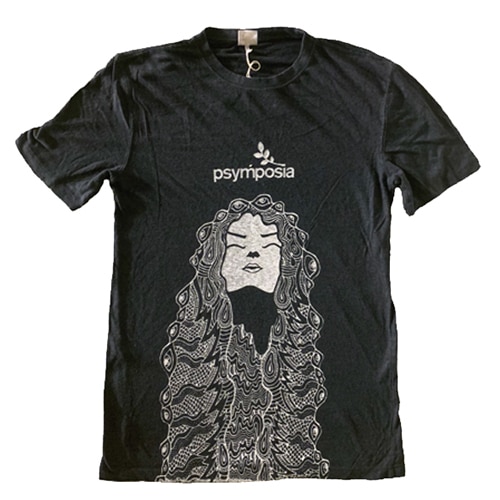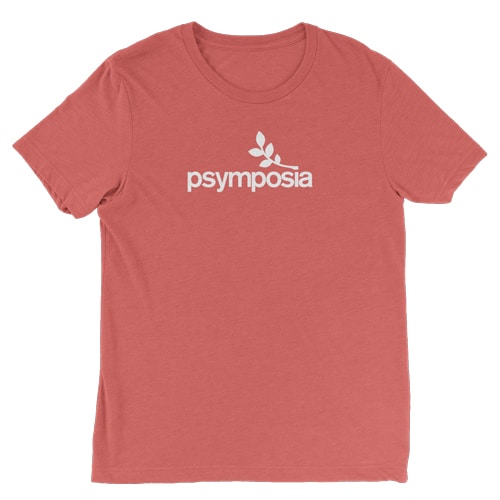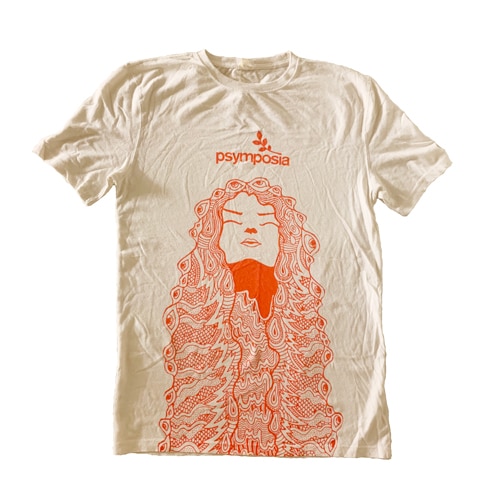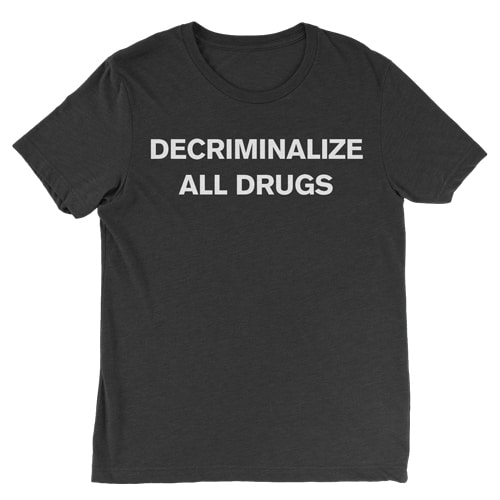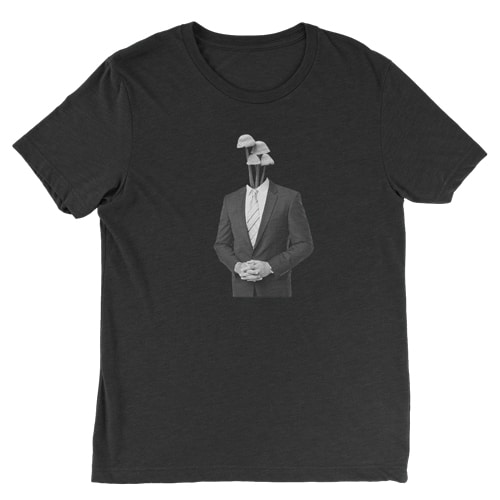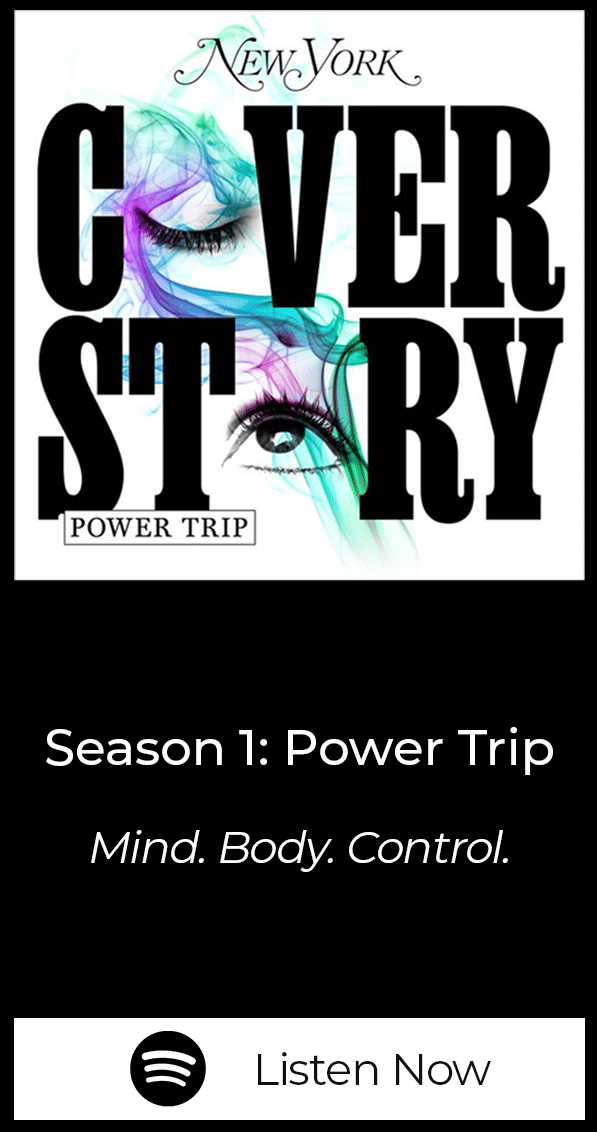Eight Things to Do After You’ve Taken Psychedelics
Eight tips for after the medicine is over.
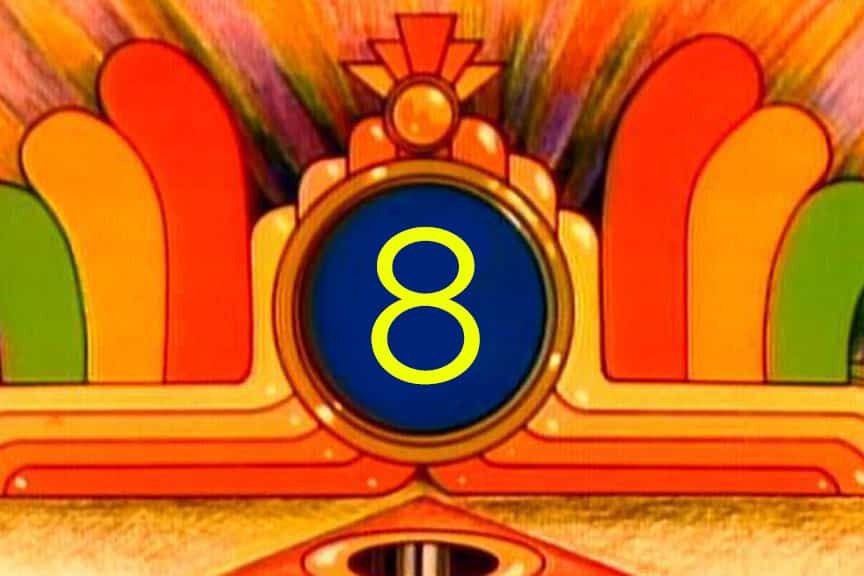
Psymposia is a 501(c)(3) nonprofit research and media organization that offers critical perspectives on drugs, politics, and culture. We rely on contributions from our readers and listeners. Your support is vital to sustaining Psymposia.
Support Psymposia’s independent journalism on Patreon and help us drive the Mystery Machine! We’re a bunch of meddling kids who are unmasking the latest shenanigans on the psychedelics beat.
One morning in the year 1766, a boy named William Blake came triumphantly running home from a ramble in the countryside to tell his parents that he had just seen “a tree that was filled with angels, bright angelic wings bespangling every bough like stars.” His parents, horrified and furious, ordered him never to tell such lies again, and the boy was only spared a beating because his mother tearfully begged his father not to thrash him. Blake’s fierce imagination rose above moral or physical coercion, and he went on to become the greatest visionary poet and painter England ever produced.
Had this incident happened today, it wouldn’t have played out much differently, except that after his beating he would probably have been put on psych meds. As an adult, if he had chosen to induce his visions through psychedelics, he would have been subject to arrest, jail time and drug treatment. To this day, we live in a culture that remains profoundly ill at ease with the possibility of non-material realities.
Despite this, with ayahuasca circles, clinical trials of psychedelics, ibogaine clinics and home-grown psilocybin mushrooms, we are now—in the most gingerly fashion possible—reapproaching our inner landscapes through the vehicle of sacred plant medicines. But for us Westerners, all the traditions around using those medicines were destroyed long ago—by us. We have very little context to do the medicines in. Indigenous people, especially from the Americas and Africa, have come to our help by sharing their traditions with us, but, when we get back from Peru, or Mexico, or the psilocybin retreat around the corner, the question is: What happens next? Usually there is no clear answer.
This is nearly tragic, because after the medicine is when we can start to draw benefit from the experience and make it part of who we are rather than something we did. We may have received a big download of spiritual information that is waiting to be absorbed; we might be grappling with new and disconcerting perspectives on our identity. We might be recovering from the fear and chaos of what gets to be called a bad trip—or maybe nothing special seemed to happen at all, and we are left feeling like the entheogenic underachievers of the group.
All these reactions need digesting and understanding, and if you plunge straight back into regular life without reflection, chances are that your psychedelic spirituality lesson plan will go unlearned.
I’m glad to say we have reached a point where we seem to be ready to make new plant medicine traditions, ones that will help us negotiate the experience usefully and gracefully. We want to enter sacred space with genuineness and integrity, and we want to find the engine of love that draws us to these journeys. These eight tips are a contribution toward evolving these new traditions with an eye on that special moment—after the medicine is over.
1. Take Time to Yourself
In Gabon in Central Africa, people are initiated into the Bwiti religion by eating the root of the iboga plant with a psychedelic dose very roughly equivalent to a flood dose of its derivative, ibogaine. The new initiate, or banzi, then spends a week or so restricted to the village, talking their experience over with friends, family members and elders. During this time, the banzi is dressed in red to symbolize their new birth and they are regarded as hovering between the spirit world and this one. A blessing from the banzi is especially prized at this time, but you will have to pay for it—as a token of the banzi’s sacredness. The period of reflection culminates in a naming ceremony where the whole community gathers together and chooses the person a new name based on the imagery that emerged during their ceremony and subsequent conversations. That same night the whole community will dance in celebration together until morning.
In our culture, we don’t have the social cohesion to replicate this kind of post-medicine process, nor do we permit ourselves the time it takes. But we can still give ourselves permission to slow down, recover and reflect. It’s very good to take a few hours or days to lie back, drink tea, and stare into space. Maybe you want a friend to talk to or a lake to sit beside, as your head recalibrates. It could even feel like the glue that used to hold your ego together got dissolved and is now in the resetting process. Whatever you can digest in this period has the potential to stay with you, just as the initiate’s new name in Gabon stays with them for the rest of their life.
2. Write it Down
Research has demonstrated that memory is a funny old thing. Usually, we think of memory as a mental CCTV recording the events of our lives, and although much will get lost or decay, the picture itself does not alter as it goes along. In fact, memory is a construct. It is deeply structured by our assumptions and expectations as it is being laid down, and each time we revisit it we create it anew, with plenty of opportunity for change at each iteration. The vast majority of false convictions in a court of law for instance, come from eye witness evidence.
Now, along comes the super-sensory mind-boggling psychedelic experience, where the only eye witness is you. Every time you recall this unclassifiable event it automatically gets reimagined, and therefore revised, and this is such a natural process you can’t even regard it as self-deception. The longer you wait to write it down, the more likely you are to wind up with a sanitized or romanticized version of events, because after all, every story improves with the telling. So, write it down, and write it down sooner rather than later—you did go to a lot of trouble to have this experience.
Another good reason to write things down is that the images from the medicine experience are not just a nice keepsake—they can be extremely useful in ongoing emotional healing. In my work with people in holistic psychotherapy, I have found over and over imagery that was on the brink of being forgotten turned out to be invaluable for people in their follow-up work. If we preserve images that may have been fading as fast as a dream, they have a chance to contribute to the healing journey.
That said, for some of us the act of writing may itself be what puts the experience into the linear, rationalistic box. Or you might find that a different form of expression, like painting, drawing, sculpture, collage—even gesture or dance—works better for you than words. But if you do not preserve the experience externally, your job is to create a storage place in your mind and heart so that it stays alive inside you.
3. How to Talk to People
Once the medicine is over, does it feel useful to you to talk to other people about what went on? If the answer is yes, who should you pick—people who have had a similar experience, or people you are close to and trust? Maybe you’re lucky enough for them to be one and the same.
If you do decide to have a conversation, it’s good to figure out ahead of time what your need is. You might essentially want to vent and have the other person hold space and listen, or you might be keen to get their comments, feedback and advice. These are very different kinds of conversations, so it’s good to let the person know what you need ahead of time, so you’re not talking at cross purposes. Sometimes you want to say, “Right now I’d like you to just listen while I get this out…” and other times you may say, “I’d really like to know what you think about this.”
Likewise, you need to pay attention to the other person as you’re speaking. Are they engaged and interested? Are they glazing over? Are they looking discomforted? If their attention is flagging or they are looking weirded out, you might want to wind things down or let them take a break. Like any other conversation, your job is to make sure the other person is still engaged and connected with you, and things are alive on both sides.
Also, sometimes so much new information gets downloaded into us that we think we need to let everyone know about it as soon as possible. Actually, no. Hesitate after you have taken the medicine and hold back on converting the world. Your uptight coworker and your teetotal auntie in Iowa will be very grateful.
4. Set an Intention
An intention comes out of a conversation you have with yourself where you figure out the things you most deeply want and how to ask for them with precision. You frame an intention with clear and simple words, none of the ifs and buts of regular speech, so your inner world can process it. People preparing to take the medicine are often invited to set an intention, and it may come out something like, “I want to change such and such a thing in my life,” “help me let go of this troubling mood,” or “let me find my deeper self,” and so on. During the medicine itself, it’s possible that your intention may help you negotiate the experience, make it more coherent and deepen your learning.
Once it’s all over, your intention may be due for a tune up. How will it be revised or deepened now, or has the medicine made it redundant and given you an entirely new focus? If your intention when approaching the medicine is about what will happen across the next few hours, the intention you set after the medicine will be about what will happen across the entire arc of your life.
Let’s say that when I took the medicine my intention was to overcome anxiety. Now that I have been through the medicine, my relationship with the anxiety may have changed. What I used to see as a plague that ruined my life that I wanted to get rid of now might seem more deserving of my kindness, and I may want to help the poor thing out. If so, then my new intention would reflect this change and “rid me of this anxiety” might turn into “help me accept the anxious part of me so it can heal.”
5. It’s Never Too Late to Have a Good Trip
Author Tom Robbins famously wrote that it’s never too late to have a happy childhood. By this he meant that we always have the chance to rewrite our internal narrative of a difficult childhood from, say, a chronicle of suffering and victimhood to a journey of resilience and survival. We might even notice happy times we had previously discounted. In exactly the same way, it’s never too late to have a good trip, no matter what opinion you had of it at the time.
Some bad trips are a temporary matter. The psychedelic experience is normal conscious experience squared, or cubed, or maybe a couple more. If your regular ego fears get triggered, they can hit the echo chamber of your tripping mind and turn from vaguely concerned to freaked out. Once the medicine experience is over though, this kind of fear usually calms down and most likely normal service will quickly resume.
But some bad trips take us to harsh places we are totally unprepared for, where fear and terror are the natural response. As the poet T.S Eliot said, “Humankind cannot bear very much reality.” A visit to a place of such pain that it seems unbearable, or a place so alien it is totally unnerving, a Mordor of the mind populated by malevolent beings, or a place of agony and death are all experiences that may continue to seep into your regular consciousness after the plant medicine experience itself is over. Then it can be a harder job to put Humpty Dumpty back together.
In this instance, you might not feel that the world we live in has primacy over the nasty one you just visited. If that other world is no less real than this one, there is nothing to stop it from reasserting itself at some unguarded moment, or at least that is how it feels. The consensus reality everybody calls home is just an agreement among friends, and once the genie of other possible realities is out of the bottle, it may prove hard to stuff it back in.
C.G. Jung, the psychologist who was also a bit of a seer, said, “The greatest and most important problems of life are all fundamentally insoluble. They can never be solved but only outgrown.” Overwhelming bone-juddering fear can’t be solved, but it can be outgrown. This growth is what Jung called the individuation process and Joseph Campbell called the hero’s journey. In this journey, you broaden your sense of self from purely ego-based you to you as spirit. Spirit You has the resilience and fortitude it takes to get through the harsh places.
Besides being a trauma, maybe the ass-kicking of your bad trip was the push you needed to get started on the hero’s journey. What doesn’t kill us makes us stronger, and the medicine that doesn’t kill us or drive us crazy can certainly make us wiser. The medicine will sometimes knock us out of our complacency, but it never signed an agreement saying it would do so nicely. Someday, though, you may be grateful for the shit-show of your psychedelic experience.
6. Cut Yourself a Break
In my therapy practice with people who have taken plant medicines, I often have conversations where people think their experience was a bust, or that there was something wrong with them for not having an amazing experience. In fact, even if you didn’t talk to God or turn into an eagle, you may still be doing just fine. And even if you did talk to God and turn into a puma, you are still faced with the task of making that experience useful in your mundane, ongoing life. Reports of ego death, as Mark Twain once said of himself, have often been greatly exaggerated.
Because our culture has no traditions around plant medicines, we are not adept at understanding them. Unless you had too low a dose, it’s possible your expectations were off, not the experience. Maybe you quietly thought a valuable experience was one where you got lots of visual imagery or deep insights, or the meeting with God thing, but instead what you got was much more sensory-based, or emotional, or even auditory; maybe you hoped for an answer to a particular question and the medicine changed the subject, or maybe you asked to see heavenly light and what you got instead was a bunch of robot monsters chasing you around a very bad Star Wars movie.
Pay careful attention to what you did get. What can you explore about the meaning? What if the medicine is wiser than you are? A client of mine in holistic psychotherapy felt like nothing much happened in his trip, but when I asked him about it he said, “I can barely fucking remember anything at all, yet it was a movie that kept playing over and over. I think I turned into a tree. It seemed to be about returning to nature for healing.” That turned out to be a fantastic gift for him with life-transforming potential.
So, if you didn’t have a spiritual peak experience, cut yourself a break and go easy. It’s a challenge, once you’re back in the ego world, to understand an encounter with immensity with equipment that is far from immense. The plant medicines are our bullshit excavators, and sometimes our expectations are what get shoved aside. Perhaps the robot monsters need to be there. Reconstructing and making meaning out of what happened is a subtle and painstaking task.
7. Do Some Emotional Healing
By emotional healing, I mean a spiritual/emotional modality of healing that directly follows up on the action of the medicine. It will speak the same language as the medicine, and the methods I am most familiar with are shamanic journeying, holotropic breathwork, and holistic psychotherapy. Shamanic journeying comes from the same kinds of traditions that medicine ceremonies come from; holotropic breathwork gets us into an altered state that is recognizably similar to the plant medicine state; and holistic psychotherapy connects us to the interior world by deliberately entering the realm of your own imagination and seeing who you find there. All three modalities work with imagery, emotion and body energies to heal the pain and the blocks inside us. I practice holistic psychotherapy, so I’ll show you emotional healing through that method.
Before she took ibogaine, Sophia was immobilized by depression, anxiety and phobias. As was not unusual for her, she had spent the two weeks before taking the medicine holed up in bed, panicked and frozen with nameless fears. As her ibogaine session began to kick in, Sophia saw a female being wearing an African cloth shimmying up to the ceiling, where she hung out next to the light fixture. Sophia called her Spirit Guide, and Spirit Guide oversaw the action of the trip, keeping the space safe for the full length of the ibogaine session.
What Spirit Guide oversaw was a powerful stream of visual images, some of them universal and archetypal, others personal. They ranged from seeing the first man and the first woman planting a tree which then grew and flourished before their eyes, to images of her father yelling in rage, to feeling the terror and confusion of a man committing an awful crime, to a biblical-style image of a woman committing a baby to the water and watching it being carried away. At the end of it all, Spirit Guide instructed Sophia to seek out help and “do the work.”
Immediately after the medicine Sophia was in a state of near bliss and resonated with the deep meaning and joy in everyday simple things, like chopping vegetables or watching children play. She said, “My core is love, that is what I have always been. We’re all fucked up humans, but that’s fine. That’s great. The Beatles were right—all you need is love.” Her depression lost its grip on her, but as she returned to life she continued to be racked by anxiety and phobias. Sophia did what Spirit Guide told her, and came to holistic psychotherapy to “do the work.”
Over the course of time she went on many mental journeys with me. Sophia—and she is not alone in this—showed a powerful capacity to go into her imagination and engage with the images she met there as autonomous elements each with its own feelings, opinions, priorities and belief systems. One time when Sophia felt stuck with helping out her anxious and phobic parts, I suggested she look for an inner resource to help her out. Sophia got very quiet, slowed her breath, and invited Spirit Guide to appear in front of her mind’s eye.
Spirit Guide appeared as requested, and soon after brought Sophia to a dirt footpath in an imaginary landscape. The footpath led to an African village where a group of women were sitting in a circle, weaving cloth. Sophia drank in the peace and calm of the women, and could feel that they were not just weaving cloth together, they were weaving themselves together into community and weaving ever-stronger connections with their ancestors. Sometimes Sophia felt them weaving circles inside her own body, too.
After several sessions of watching the women weaving, Sophia was able to invite herself into that circle, where she was accepted and embraced by the women. Spirit Guide said, “Avoiding conflict is not the point. Sit with it.” She continued, “Peace is here and peace is present. It pulls in conflict, it pulls in ego, and embraces them. When you are coming from peace, vision and judgment are not impaired.”
This magical circle of women was the counterweight that Sophia’s fears and anxieties required. She reconnected with that core of love the medicine had briefly shown her, but now it was becoming part of her daily life in a sustainable way. She saw a little girl version of herself, joyously twirling and dancing, a girl who had been shaken out of her joy by family shouting, angry intrusions and cynicism. “It’s hard to twirl while you’re getting yelled at—so you have to switch off. To interrupt joy is so crushing, you get beaten down and then you give it up. There was no sacred space then, but I can make that for myself now. I have that power. Now I can allow the joy to be unbroken. I can sit in it.”
After this work, Sophie’s new-found confidence and “exploding happiness” dislodged her anxieties and phobias from the steering wheel of her life. These days, Sophia will sometimes be seen twirling in the park, ignoring the people who think that spontaneous expressions of pure happiness are inappropriate and weird. Unlike before, she flies in airplanes and speaks her mind in meetings. And Spirit Guide, who had in a sense been summoned by Sophia’s negative emotions, is now an ally for life.
8. Do an Awareness Practice
They say that the journey of 10,000 miles begins with the first step, but the remaining 17 million or so steps shouldn’t be forgotten. That’s where an awareness practice comes in, because a lot of the qualities that an awareness practice develops—equanimity, awareness of course, clarity—are exactly what we need for entering a plant medicine experience and for absorbing its content after it’s done. If the medicine is spiritual surgery, then an awareness practice is the diet and exercise regimen the doctor tells you to do afterward.
The practice you choose may be meditation, but it could as easily be yoga, qi gong or anything else that speaks to you. It might be a walk along the river or staring at a fire; whatever draws you closer to yourself and inner freedom of heart. Every session of awareness practice is a mini piece of the letting go, a further sorting through the debris we have inherited and accumulated as we make our way through life. A word of caution though, sitting around ruminating about how life sucks and people aren’t fair is not the same as meditating, and it is good to get yourself exposed to some kind of a formal awareness training.
If you work with psychedelics on an ongoing basis, an awareness practice will be a tremendous support. It’s a sort of hare and tortoise collaboration where the slow work of the practice deeply informs the speedy and explosive work of the medicine. In the awareness practice you absorb the lessons of the last plant medicine session and prepare for the next one by increasing your capacity for fortitude and attentiveness. Going from one session to another without enough reflection puts you at risk that the next plant medicine experience will be a rerun of the lessons of the last one, a spiritual Groundhog Day of the soul.
The Eight Things to Do After You’ve Taken Psychedelics
- Take Time to Yourself: Rest, recover, and let your brain reset.
- Write it Down: Keep a written record of what happened. Future you will be glad for it.
- How to Talk to People: Do you want advice or a listening ear? Let people know.
- Set an Intention: We set intentions for going into the medicine—how about for the rest of our lives afterwards?
- It’s Never Too Late for a Good Trip: Don’t write off that bad trip. It may have much to give you.
- Cut Yourself a Break: If your medicine experience was not the thriller you hoped for, it may be your expectations that got it wrong, not the plants.
- Do Some Emotional Healing: Keep the healing process going. Visit the places in pain and help them heal.
- Do an Awareness Practice: A regular awareness practice underlies everything else on the healing journey. Don’t leave home without it.
Hey! Before you go… Psymposia is a 501(c)(3) non-profit media organization that offers critical perspectives on drugs, politics, and culture. We strive to ask challenging questions, and we’re committed to independent reporting, critical analysis, and holding those who wield power accountable.
Our perspectives are informed by critical analysis of the systemic crises of capitalism that have directly contributed to the unmitigated growth of addiction, depression, suicide, and the unraveling of our social relations. The same economic elite and powerful corporate interests who have profited from causing these problems are now proposing “solutions”—solutions which both line their pockets and mask the necessity of structural change.
In order for us to keep unpacking these issues and informing our audience, we need your continuing support. You can sustain Psymposia by becoming a supporter for as little as $2 a month.
Brian Murphy
Brian Murphy, M.Ed, LCSW, has a private practice in Holistic Psychotherapy in New York City, and is also the head of Holistic Health at New York Harm Reduction Educators, a syringe exchange program in East Harlem. He has worked with active drug users for over twenty years, using the compassionate and flexible model known as harm reduction.
